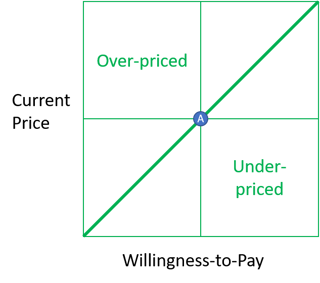Willingness-to-Pay Insights and Marketing Budgets
 PriceBeam
·
1 minute read
PriceBeam
·
1 minute read

In many organizations this is the time of the year for making marketing budgets. Marketing teams build plans for the coming year and petition various stakeholders for (additional) funds.
Willingness-to-pay research can be very useful to plan and defend marketing budgets, and the starting point can be something as straightforward as this:

If a product has a current price that is higher than the value customers put on it (i.e. their willingness to pay), then that product is over-priced. Similarly, if the current price is lower than what customers are willing to pay, then it is under-priced.
Willingness-to-pay insights can easily and rapidly be identified using PriceBeam's solutions.
So how can marketers use such insights? Well, in simple terms, if a product is under-priced, then it is time to plan and implement a price increase. These days we all see vendors raising prices ahead of next year, but some do it well and others implement price increases very poorly. A proper price increase requires first and foremost communication and explanation of benefits and values, so that the customer feels that the price increase is justified. A poorly communicated price increase often just increases the price without any further explanation, leaving the customer feeling unfairly treated. Communication is a core discipline within marketing and the team should be fully involved in doing the appropriate activities to ensure that the price increase is well implemented and well received.
If a product is over-priced, then there are more avenues to work on. If it is the case that the product is truly not very valuable, of course prices may have to be slashed, but it could be that customers don't understand the brand's true value, and thus marketing needs funds (budget, budget, budget) to build up the perception of value. A more detailed analysis of willingness-to-pay, including WtP by segment as well as breaking down individual product attributes and their influence on overall willingness-to-pay may also reveal that certain product features are highly valued by all customers, or particular segments, whereas other product benefits may be under valued. This kind of insight can typically be ascertained through WtP conjoint analysis.
PriceBeam is this week launching a new WtP service exactly based on conjoint analysis, allowing our customers to not only get the facts right about overall willingness-to-pay, but also to analyze the details behind why that is so.
.png?width=400&height=100&name=PBLogoTransparent%20(1).png)



